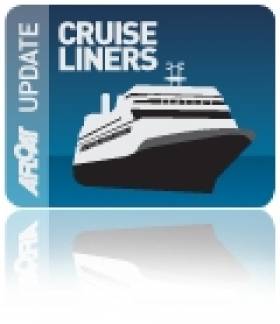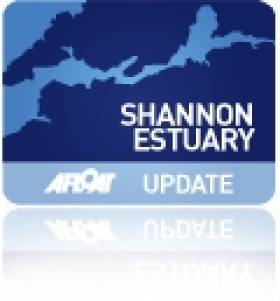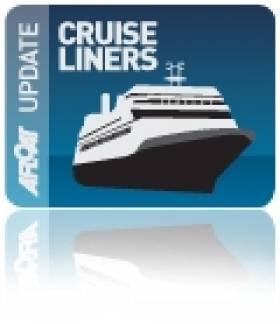Displaying items by tag: Foynes Port
All Things Nautical As Sisters to Meet On a Journey
#CRUISESHIP SISTERS – Oceania Cruises Nautica (2000/30,277grt) currently docked in Dublin Port will later today be joined by a sister, Azamara Journey, operated by Azamara Club Cruises, writes Jehan Ashmore
Azamara Journey had departed Leith and is heading through the Irish Sea and is expected to arrive in the capital port around mid-afternoon.
Both vessels (circa 680 passengers) form part of an original eight-strong sister fleet of French built 'R' class ships ordered for Renaissance Cruises, which ceased trading in 2001, resulting in the splitting of the ships to various owners.
Incidentally Oceania Cruises also operate two more such sisters. Regatta built as R Five and Insignia, the former R1, the lead-ship of the series all having the previous owner's rather simplistic naming theme. Likewise Azamara Club Cruises operate the former R Seven, rechristened Azamara Quest.
Another 'R' class sister operating for P&O Cruises, the Adonia, which led the seven-strong spectacular sail-past in Southampton waters for the 'Grand Event' to celebrate the 175th anniversary of the famous company, is due to call to Foynes in a fortnight's time.
Noting that Adonia, led the liner line-up which included Arcadia (as previously reported), seen third in line astern and where each ship set off on separate cruises as they headed out of the Solent.
Cargo Ships Collide in Shannon Estuary
The second vessel, the 93-metre Danish-registered Tina Theresa, was leaving the anchorage to meet up with the Shannon estuary pilot when the collision took place. The tanker was destined for Foynes Port in Limerick and was damaged along her starboard side but there was no hull damage.
Loop Head: A Guiding Light for Foynes-Bound Cruise Calls
Her arrival will be followed by P&O Cruises latest addition Adonia on Saturday. With 710 berths the 30,000 tonnes vessel is the smallest of the seven-strong fleet which can accommodate between 1,800 and up to 3,100 passengers as in the case of the Azura. The 115,000 tonnes vessel departed Dublin Port this evening. Her first call to the port was last year (click HERE) and she is the largest cruise ship to call to the capital.
On Tuesday of next week the 9,000 tonnes Spirit of Adventure (cruises) marks the third cruise caller to Foynes. The port is along with five other terminals located throughout the country's largest estuary are operated by the Shannon Foynes Port Company (SFPC).
Incidentally Spirit of Adventure and Azura where two of another trio of cruise ships that visited the Port of Cork on Monday, with Holland America Line's 59,000 tonnes Rotterdam forming the third vessel. This was the first occasion that Cork has handled this number of cruise ships on a single day, bringing 7,000 passengers which set a new record for the port.
- Shannon Estuary
- Shannon Foynes Port Company
- P&O Cruises
- Loop Head
- Cruiseships
- lighthouses
- Dublin Port news
- Holland America Line
- Port of Cork News
- Le Diamant
- Cruiseliners
- Spirit of Adventure
- Shannon Estuary news
- Loop Head Lighthouse visitor centre
- Azura cruise ship
- Spirit of Adventure cruiseship
- Adonia cruiseship
- Rotterdam cruiseship
- Loop Head Lighthouse
- Shannon Estuary and River
- Shannon Estuary and River news
- Lighthouse news
- Irish cruise calls
- Irish ports of call
- Foynes Port
































































